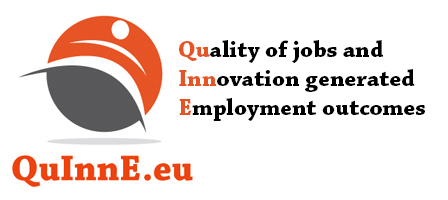Can we measure the evolution of job quality during the Great Recession and what are main trends?
by Christine Erhel and Mathilde Guergoat-Larivière
Aggregate analysis of job quality using synthetic indexes provides interesting comparative results and identifies some drivers of job quality. It shows for instance that the correlation between job quality and the economic cycle is positive in general: countries where employment is higher and unemployment lower usually have relatively high levels of job quality. Over the years 2005-2010, these indexes generally reveal a slight decrease in job quality that may be partly related to the crisis.
However several reasons call for disaggregating the analysis. Composition effects cannot be corrected at the macro level, which raises concerns when one wants to study the relationship between job quality trends during a recession. Stability or even improvements in aggregate job quality may hide some job destructions in the low-wage low-quality jobs. Job quality improves but only because bad jobs are destroyed…Two other (contradictory) effects are also relevant to explain trends in job quality in the crisis. Rising unemployment can deteriorate the bargaining power of workers leading to decreases in job quality (in terms of working conditions, hours of work, wages etc.). But at the same time, if subjective indicators of job quality are used (based on workers’ declarations), a “perception” effect can also be at play: when more and more workers are unemployed and the situation on the labour market is worsening, people who still have a job may evaluate their job quality in a more favourable way. When aggregate measures are used, it is impossible to disentangle between these two effects…
Another reason why it is important to disaggregate the analysis of job quality trends is the heterogeneity of job quality across social groups: women, youth, low educated are usually more concerned by bad jobs and such inequalities might be even higher in bad times.
What are the results of analyses looking at job quality trends at the individual level? Previous research from Quinne researchers, analysing the evolution of job quality at the beginning of the crisis (between 2007 and 2009), using EU-SILC data, has shown that some socio-economic groups are more affected by decreasing trends in job quality (other things being equal), especially youth, older workers and low-educated workers. Women seem less affected by these negative trends than men but are more likely than men to become unemployed or inactive over the period. Cross-country heterogeneity in job quality trends can be related to economic trends (the size of unemployment variation) and, to a minor extent, to the employment distribution by sectors. Some labour market institutions also seem to play a role in explaining the evolution of job quality in times of crisis: employment protection legislation (as defined by the OECD) prevents individual transitions to non-employment (and has no direct effect on job quality) while public expenditure per unemployed slightly reduces the risk of job quality deterioration.
See
ERHEL C., GUERGOAT-LARIVIERE M., LESCHKE J.,WATT A. (2012), “Trends in job quality during the Great Recession: a comparative approach for the EU”, Document de travail du CEE, november 2012, n°161
http://www.cee-recherche.fr/publications/document-de-travail/tendances-d...
